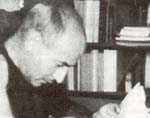|
|
Centre of Speleological Documentation Franco Orofino
 The Centre of Speleological Documentation Franco Orofino, which covers about 70 square meters on the first floor of the Museum building, includes:
The Centre of Speleological Documentation Franco Orofino, which covers about 70 square meters on the first floor of the Museum building, includes:
the Library, the Archive of Photographs, the Newspaper and Periodical Library. The Centre of Documentation represents a necessary support for any scientific activity and research of the Speleological Museum. It is a source of resources for carrying out teaching and research activities within the schools; at the same time, it is open to anybody interested in the consultation, reading, and studying of matters related to speleology and karst. Therefore, beyond the speleologists, which are the most natural users of such a centre, pupils and students, as well as university students, researchers and professors, can see in the Centre a useful place where to discover and consultate references and works not easy to find out in other libraries. The Library of the Centre of Speleological Documentation is included among the specialized thematic libraries which are recognized by the Library of the Regional Counsil of Apulia. The Library The Library consists of 6 shelves for a total of about 10 meters, one container for maps, one exhibitor for periodicals, two computer stations and two tables for consultation. In the exhibitor, the recentmost issues of newspapers, bulletins and periodicals dealing with speleology are shown. A large area is devoted to consultation of books and periodicals, allowing simultaneous presence of about 10 people. Cataloguing of all the material of the Library is at the present not yet completed; nevertheless, the rapid traceability of publications dealing with the many features of speleology is assured through the help of our personnel. Double copies of books and publications, to be used for exchanges with other speleological libraries and organisms is so far kept in the building basement. The Library is subdivided in bibliographical indices, books, booklets, offprints, proceedings of coferences and symposiums, bulletins of speleological clubs, periodicals. The books are ordered into areas of interest such as the physical speleology (hydrogeology, geology, mineralogy, etc.), biology, archeology, or, alternatively, according to a geographical distribution among the different italian regions. A miscellany section, in addition, comprises all of the works which are not easily included in the previous sections. Booklets and offprints are ordered following the same disciplinary areas as the books. Among the many books available in the library, some deserve a particular mention: the now unobtainable book by Luigi Vittorio Bertarelli and Eugenio Boegan, entitled "Two thousand caves", published in 1926 by Touring Club Italiano, and many other publications of difficult availability. At present, the Library consists of more than 4000 volumes, including books, booklets, offprints, proceedings of conferences and symposiums, and issues of periodicals and bulletins. These numbers attest the Centre of Speleological Documentation "Franco Orofino" as the largest library of speleology in Southern Italy; it is second in Italy only to that of the Institute of Geology at the University of Bologna. The near publication of the journal of the Museum will further allow an increase in the exchange of materials with other museums and research institutes in Italy and abroad; at the same time, subscriptions to the most important italian and foreigner journals will be effected. The Archive of Photographs The Archive of Photographs gathers photographs (mostly black and white) dating back to the first years of the touristic activity at the Castellana Caves. Photos of other caves in Apulia and in other Italian regions as well are also present. This rich and unique photographic documentation allows to analyze the different phases of growth of the touristic pole at the Castellana Caves, and, at the same time, to live again the main political, cultural, military and religious events in Apulia and in Italy during the second half of the last century. At the present, the Archive of Photographs consists of more than 300 photos with various size, ordered according to chronology. The first photographs were shot by the photographer Cav. Michele Ficarelli from Bari, and date back to 1938, when the caves were discovered; in the following years, some photographic institutes (Istituto Nazionale Luce, Fiore Film) and many generations of photographers (Angiolini, Mastrorilli, Vacca, Spagnuolo, Ottomano, Guglielmi, etc…) also worked at Castellana, contributing to leave evidence of the local history. The collection has further increased with new material (colour photos and slides) generously given by the members of Gruppo Puglia Grotte. In order to complete the collection, it would be necessary to acquire the photographic materials of the Castellana Caves, which is now kept at the Municipal Library of Castellana-Grotte. The Newspaper and Periodical Library The Centre of Speleological Documentation includes a rich Newspaper and Periodical Library that was collected by Professor Franco Anelli in the years when he was Director of the Castellana Caves. Most of the material is kept in three large file-holders. The Newspaper and Periodical Library consists at the present of more than 1200 articles, covering a time span from October 1948 up to now; most of these articles deal with the Castellana Caves, but some of them treat other caves and karst features of Apulia and the rest of Italy as well. This collection is a very important tool for understanding the historical events during the first and difficult years of the touristic activity at the Castellana Caves. At present, increase in the number of collected material is assured through generous contribution by some members of Gruppo Puglia Grotte. Museo Speleologico Franco Anelli P.le Anelli 70013 Castellana-Grotte BA - museoanelli@grottedicastellana.it - tel +39-080-4998230
|